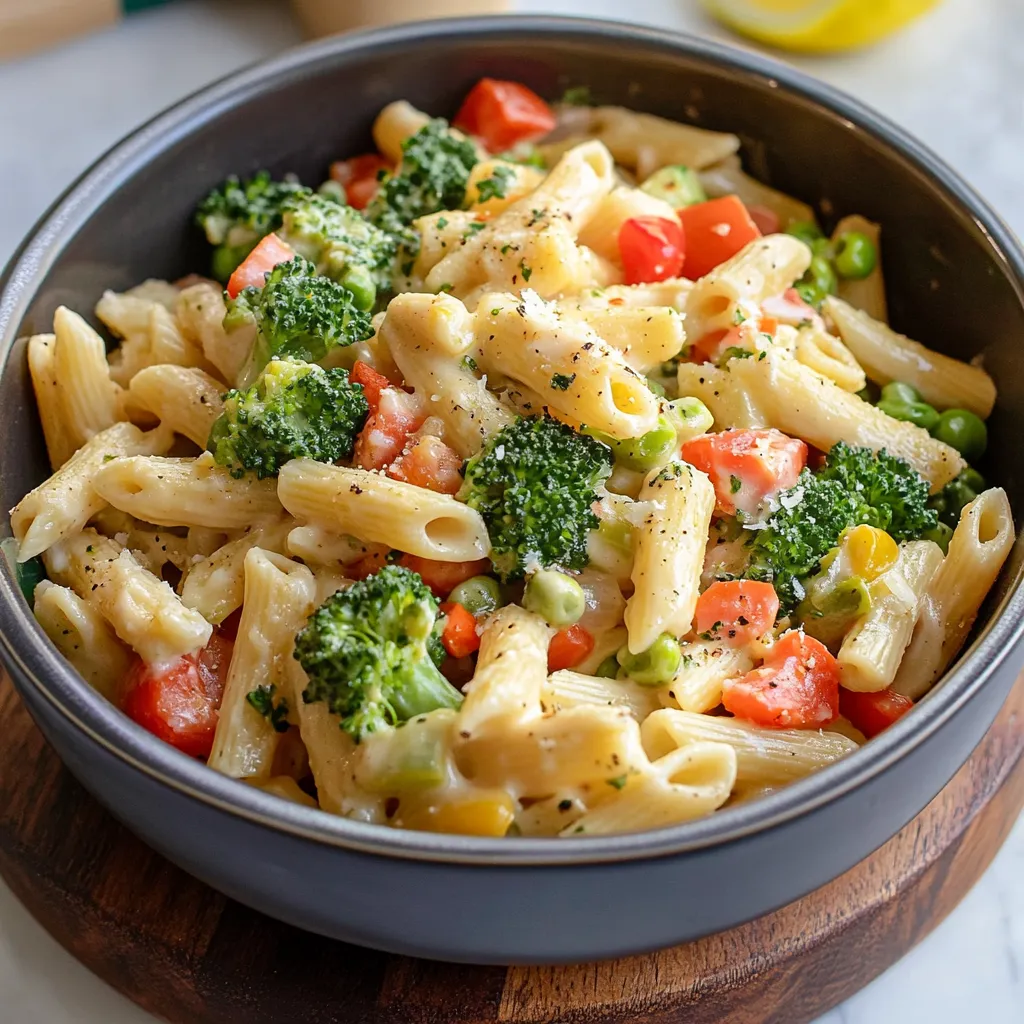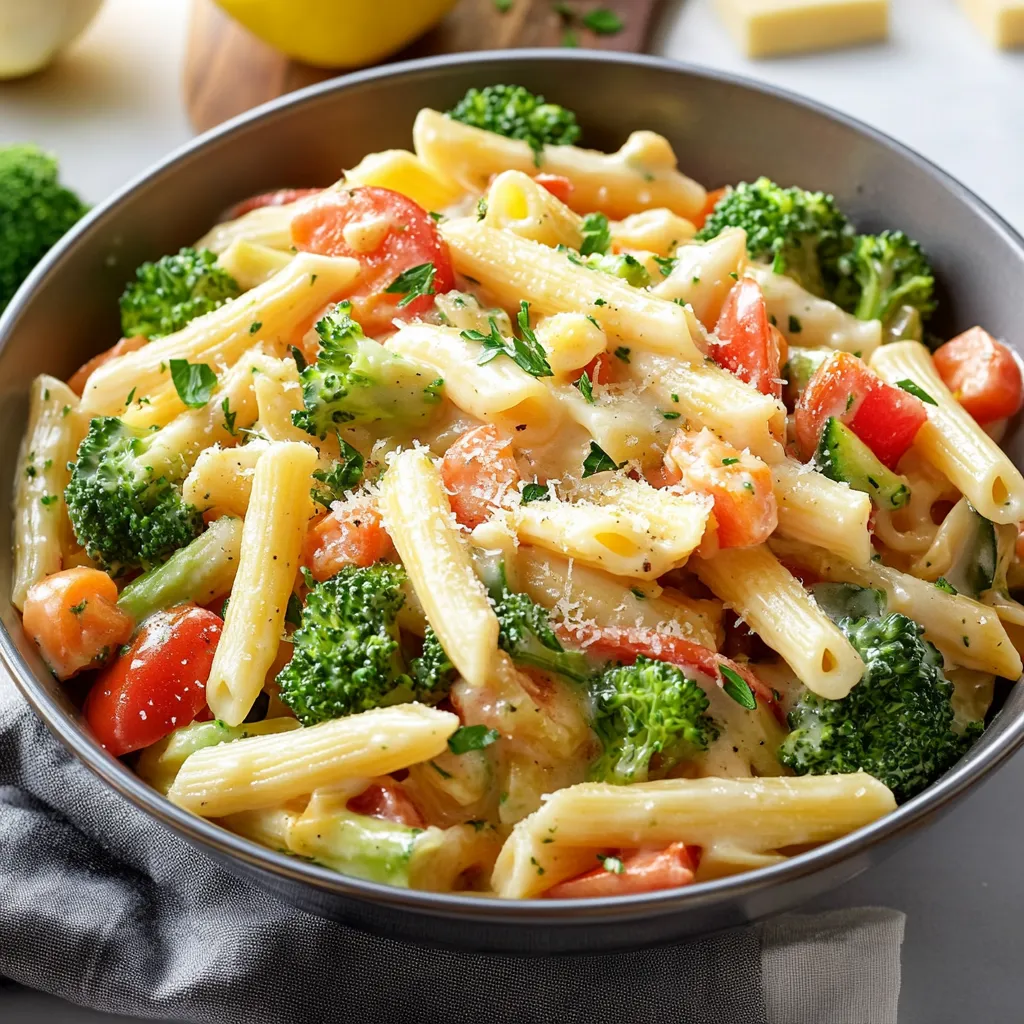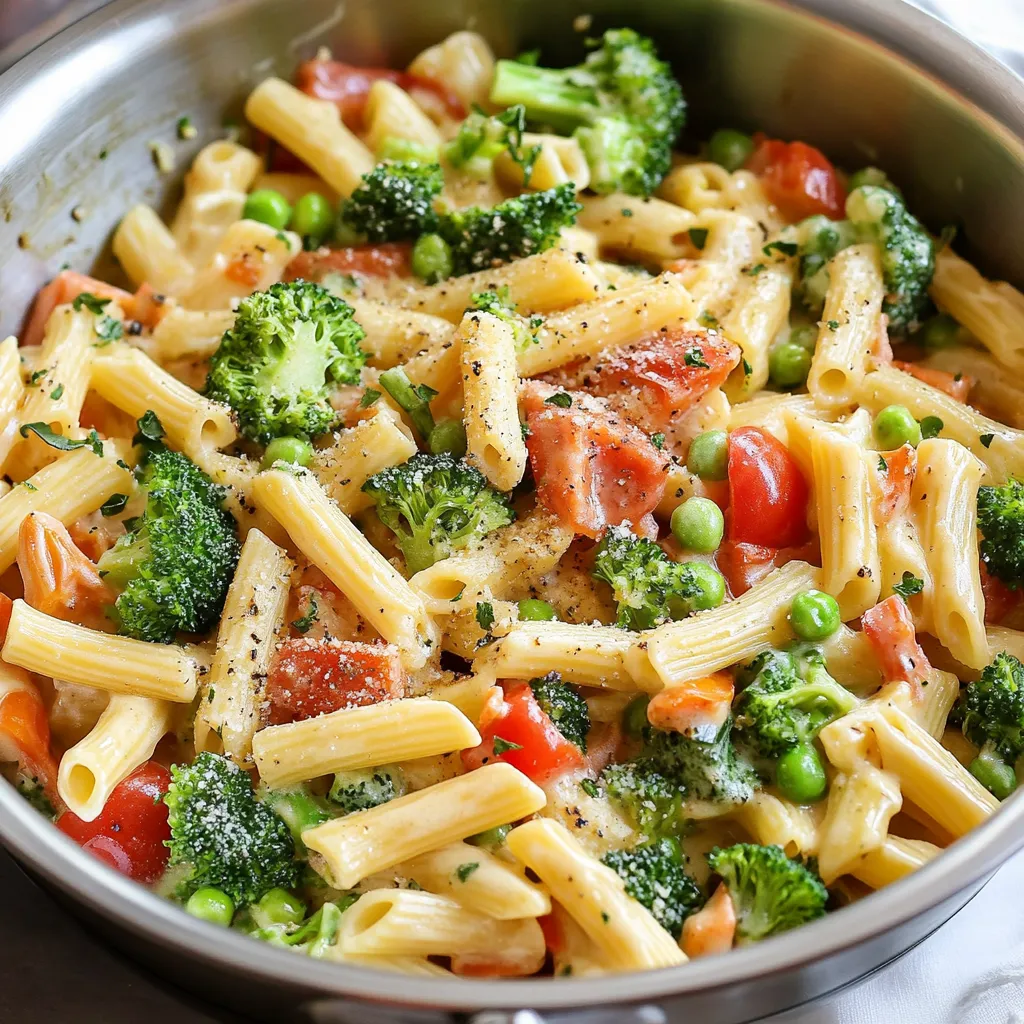 Pin it
Pin it
A classic Pasta Primavera combines tender pasta with garden-fresh vegetables, all enveloped in a silky parmesan cream sauce. This vibrant dish celebrates the natural flavors of seasonal vegetables while creating a satisfying, restaurant-worthy meal that brings warmth and comfort to your dinner table.
After discovering this recipe in a small Italian restaurant, I've spent years perfecting the balance of vegetables and mastering the silky sauce. The way the parmesan melts into the cream creates a velvety coating that clings perfectly to both pasta and vegetables.
Choosing Your Essential Ingredients
- Penne pasta: Provides the ideal shape for catching creamy sauce in its ridges and hollow center.
- Fresh broccoli florets: Bring bright color and retain their perfect crunch when properly cooked.
- Carrots: Offer natural sweetness and a pop of orange that makes the dish visually appealing.
- Cherry tomatoes: Burst with flavor, creating pockets of brightness throughout the dish.
- Half and half: Creates the perfect sauce consistency without being too heavy.
- Freshly grated parmesan cheese: Melts beautifully and provides rich, savory depth.
Creating Your Perfect Pasta
- Preparing The Foundation:
- Bring a large pot of generously salted water to a rolling boil. Cook your penne until it reaches that perfect al dente texture, where each piece still offers a slight resistance when bitten.
- Building Flavor Layers:
- Heat your skillet until it's properly hot before adding vegetables. This ensures they'll sear rather than steam, developing deeper flavors while maintaining their crisp texture.
- Crafting The Sauce:
- Start with a butter and flour roux, cooking until it turns slightly golden. Gradually incorporate your liquids, whisking constantly to create a smooth, lump-free base.
- Final Assembly:
- Combine your perfectly cooked pasta with the velvety sauce, then gently fold in the vibrant vegetables. The heat will help marry all the flavors together beautifully.
 Pin it
Pin it
In my kitchen, this dish has become a weekly staple. My children love helping choose different vegetable combinations, making each version unique and exciting.
Creative Serving Ideas
Transform your pasta primavera into an elegant meal by finishing with a drizzle of extra virgin olive oil and a scatter of fresh herbs.
Personal Touches
- Enhance your creation with seasonal vegetables like asparagus in spring or butternut squash in fall.
- Each variation brings its own character to this versatile dish.
Smart Storage Solutions
Keep your pasta primavera fresh by storing it in an airtight container. When reheating, add a splash of cream or pasta water to restore the sauce's silky texture.
 Pin it
Pin it
Through countless preparations of this dish, I've found that taking time to properly cook each component transforms simple ingredients into an extraordinary meal. The joy of serving this colorful, aromatic pasta never diminishes, especially when I see empty plates coming back from the table.
Frequently Asked Questions
- → Can I use different vegetables?
- Yes, swap in any vegetables you like - asparagus, mushrooms, cauliflower or green beans all work great in this dish.
- → How do I make this vegetarian?
- Simply replace the chicken broth with vegetable broth and skip the chicken bouillon for a vegetarian version.
- → Can I make this ahead?
- You can prep all vegetables and make the sauce ahead. Cook pasta and combine everything just before serving.
- → Why did my sauce get grainy?
- Add cheese over low heat and stir constantly. High heat can make dairy separate and become grainy.
- → How long do leftovers last?
- Store in the fridge for up to 3 days. Reheat gently in the microwave or on stovetop to maintain the sauce's texture.
